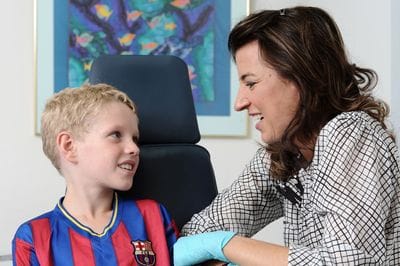Early Intervention
The Australian Society of Orthodontics recommends a first assessment between the age of 7 and 9
The screening of children for the early diagnosis and detection of any anomalies can be of huge benefit to the treatment of orthodontic problems, even if only to identify the ideal time for any future care. Treatment may often not begin at this age but the child's growth and development can be recorded and monitored until the appropriate time for the commencement of the active care. We encourage you to seek an opinion early and if no early treatment is required we will monitor their growth and development at no extra charge.
Early Phase or Interceptive Treatment for those children, where there is a clear indication for care, may improve or correct:
- Upper jaw constrictions - early expansion is often desirable
- Anterior cross bites - correction is best completed before the age of 10
- Oral habits - such as thumb sucking
- Aesthetics - where self-esteem is a concern often from teasing
- Speech problems - where indicated and usually in conjunction with a speech pathologist
- Preserve space for permanent teeth - especially important where baby teeth have been lost early
- Minimise tooth damage from traumatic bites - for example from teeth erupting in a cross bite
- Minimise soft tissue damage from traumatic bites - lower teeth biting into the palate
- Reduce the protrusion of severely protruded teeth to reduce the risk of front tooth damage
- Influence jaw growth in a positive manner - correcting cross bites usually restores facial symmetry
- Severe crowding - which can sometimes be minimised
This early phase treatment is most often commenced for children between the ages of 7 and 10 years. Children of this age are usually highly compliant and cope extremely well with treatment. Early treatment usually lasts 6 to 12 months after which we will normally monitor your child's growth and development until the eruption of the adult teeth. At this time consideration is given to the need for any further care.
Most children who have an early phase of orthodontic treatment will require a more comprehensive phase of treatment in their early teen years to create a more stable, functional and aesthetic result. This more comprehensive phase of treatment usually involves wearing braces.
If you have any concerns regarding your child's dental and facial growth and development seek an early specialist opinion








